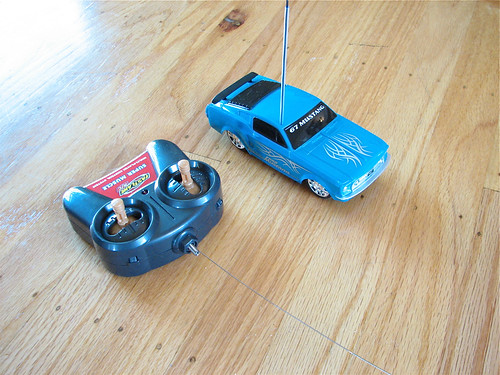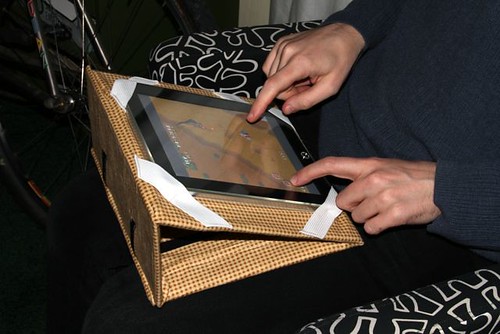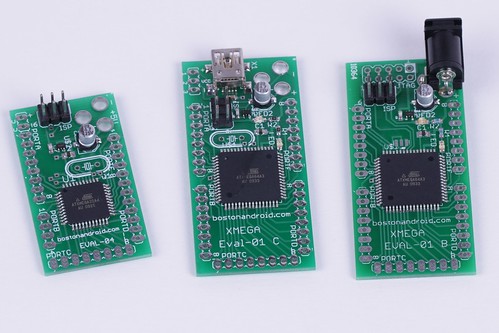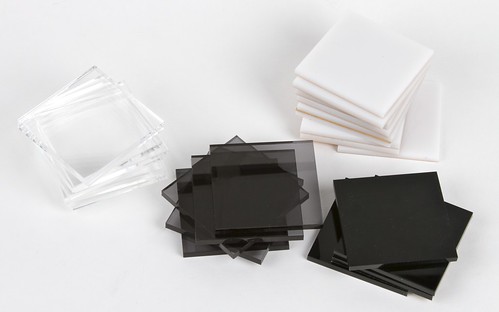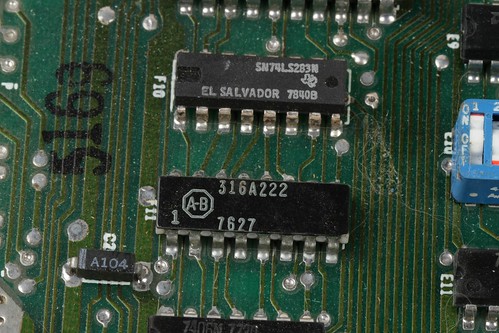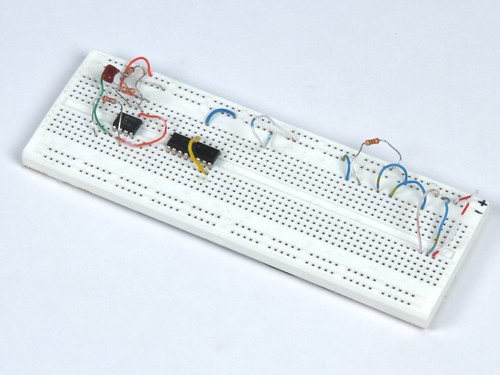Cheap RC car + piece of string = radio control string cat toy
All posts by Windell Oskay
A lap stand for your iPad
Sure, that iPad’s fun. But doesn’t your arm get tired propping up one and a half pounds after an hour or two?
Yes, one thing that the iPad is definitely missing is angle. A laptop has an adjustable screen, and you can just set it on your lap for couchborne surfing. Just set the iPad on your lap and… well… it’s sits there taunting you, pointing at the ceiling.
You can try sitting cross-legged like Steve Jobs, angle your knees with the help of the coffee table, or give up and shell out for a tabletop dock.
No, it’s not the end of the world. But shouldn’t fun new toys just be… fun?
So here is our solution: a DIY adjustable-angle iPad stand for your lap. Inexpensive, cozy, and light. Designed for both portrait and landscape use, and ready to fold up for transport and storage. With a stand, you can use your ‘Pad with zero, one, or two hands, and sit how you darn well please.
Streaming data from Flash to Peggy
Wicked Cool Flash to Peggy (Arduino) Demo from Leonard Souza on Vimeo.
Leonard Souza wrote in with a pretty neat demo that he put together, generating video in flash and streaming it to a Peggy 2.
His demo video is embedded above, and the direct Vimeo link is here. If you’re not into programming, note that the animations start at about 1:00 into the video.
Leonard has written much more about this project at his site, so take a look if you’d like to see how he put this together or download the source code. Nice!
A History of the Sky
Ken Murphy’s A History of the Sky is a fantastic art project recording, collecting, and displaying time-lapse movies of the San Francisco sky.
The movies are displayed side-by-side in high definition– one little video for each day –and synchronized to show the same time of day in each movie. It’s simply stunning to see the progression in the length of the days as the seasons change.
Here is Ken’s video introducing the project, still very much a work in progress:
The technical aspects of this project are nothing to sneeze at either, involving weatherproofing a digital camera, tiny and large linux computers, design for high reliability, video processing, and big data sets. Ken’s site has the details. It’s an excellent set of hacks in service of an beautiful project; we look forward to seeing it complete.
Love this project as much as we do? You can help support it through Kickstarter.
Say hello to xmega
We’ve been big fans of AVR microcontrollers for a few years now. If you look around our site a bit, you might find quite a few AVR projects. And our little friends the ATtiny2313 and the ATmega328P have become our go-to chips for many different purposes.
And, while none of that is changing, something that just seems better has come along. Or rather, a better AVR has come along.
And now, a few words form our sponsors…
Well, someone else’s sponsors, actually.
We recently came into possession of this July 1976 issue of Popular Electronics, and scanned a few of the vintage ads– including a few from companies that you might recognize.
Making something useful out of acrylic scraps
From a recent project we ended up with a few hundred scraps of acrylic, mostly in little squares like these. But what to do with all those scraps?
Continue reading Making something useful out of acrylic scraps
Basics: Finding pin 1
You’ve got your components, and your datasheet, and you’re read to start hacking. But which way does the chip go? Pin 23 is where? If you’re lucky, the orientation is clearly marked, or perhaps diagrammed in the datasheet. But if it isn’t, or if you’re simply new at this, it’s helpful to know what to look for. Continue reading Basics: Finding pin 1
Faking it: seven-segment displays
A sordid tale, starting in the bedroom, involving batteries, deceit, cheap tricks, LEDs, and a pot.
Continue reading Faking it: seven-segment displays
Mailbag: Moving from breadboard to protoboard
Ryan writes in,
| “I have a question about moving a project off a bread board and onto a project or perf board. Basically what is the best way to do without a lot of rework? This will be my first time doing this and I was just wondering if there were any best practices so that the final product looks clean and organized and I don’t have mountains of solder on the back side.” |
And it’s a good question.
Continue reading Mailbag: Moving from breadboard to protoboard




